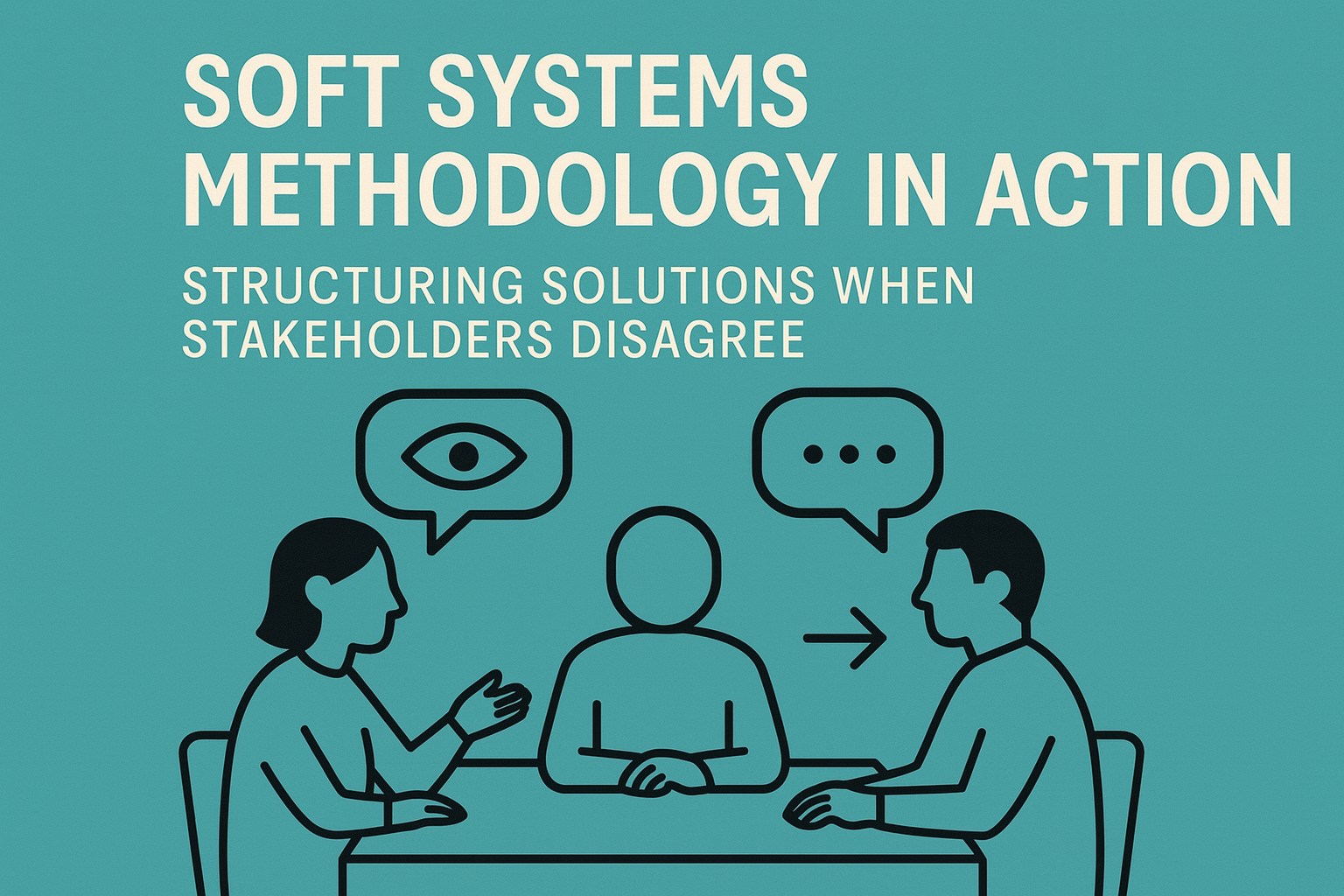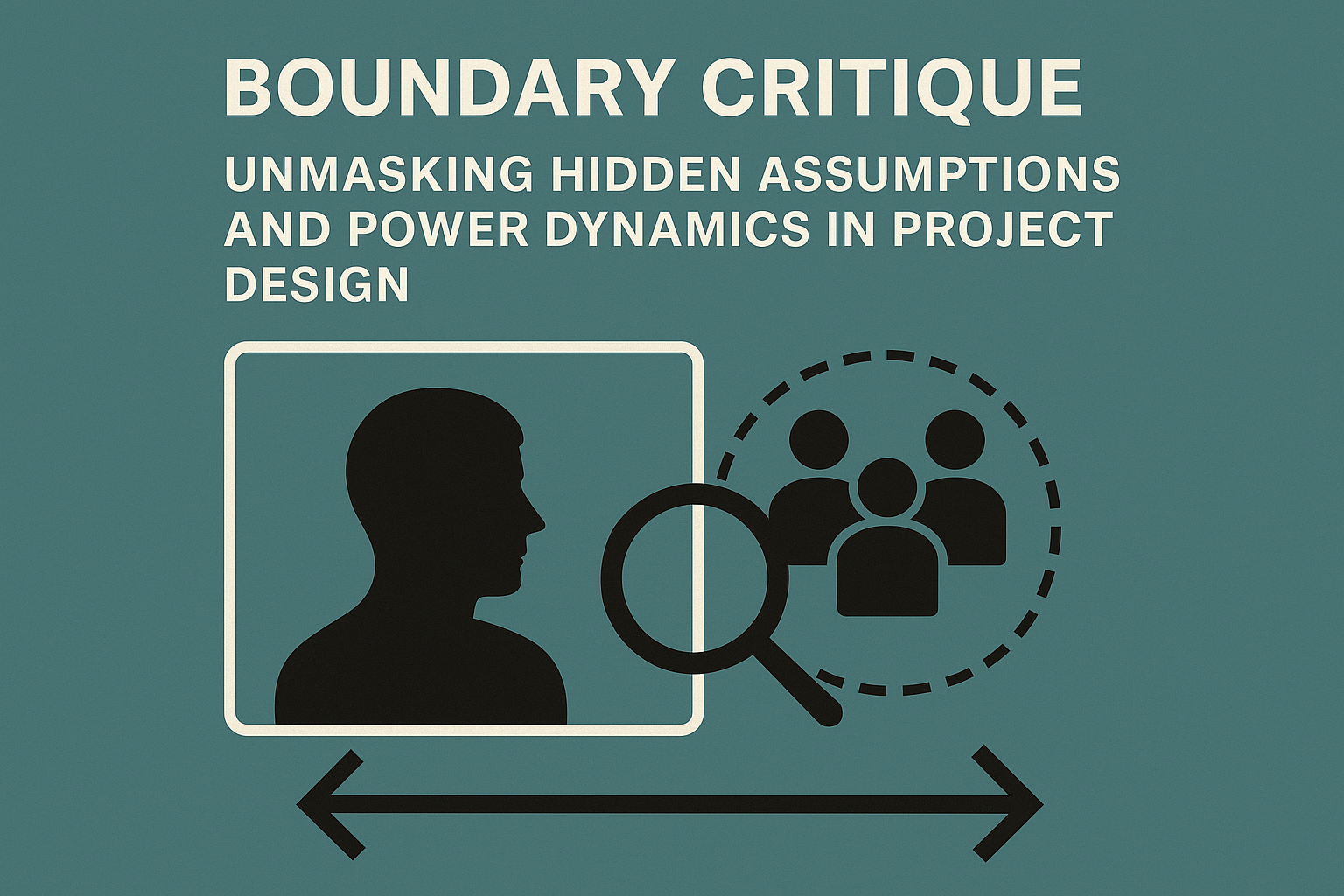Introduction – When Problems Are About People, Not Just Processes
Many real-world problems do not have simple answers. They involve different people, different interests, and different beliefs about what the problem even is. A school improving learning, a hospital updating patient care, or a city planning transportation — each group sees the situation differently.
If we choose one viewpoint and ignore the rest, conflict grows. That is why Soft Systems Methodology (SSM) is important. It helps groups learn together, share their worldviews, and build changes everyone can accept.
SSM is not about finding the “right” solution. It is about creating a solution that is systemically desirable and culturally feasible for everyone involved.
What Is Soft Systems Methodology (SSM)?
Soft Systems Methodology is a way to handle complex problems shaped by human behavior. It was developed by Peter Checkland and focuses on learning, not forcing a single viewpoint.
SSM treats the situation as a Human Activity System — something people do based on their values and beliefs. The goal is to explore different perspectives before making any decisions.
Instead of asking “What is the problem?”, SSM asks a better question:
“What is the problem from each person’s point of view?”
Understanding Multiple Perspectives (Weltanschauung)
The German word Weltanschauung means “worldview” — how someone sees the world shaped by their experience, culture, and role.
For example:
-
Doctors may believe a hospital should focus on medical results.
-
Nurses may value patient comfort and communication.
-
Administrators may focus on budgets and policies.
All views are valid. SSM helps everyone understand each other before talking about solutions.
Rich Pictures – Making the Situation Visible
One of the first tools in SSM is drawing a Rich Picture. This is a simple drawing that captures:
-
key people
-
problems and conflicts
-
processes and flows
-
feelings and concerns
No artistic skills required. The goal is to make the messy situation clear so everyone sees what is really happening.
When people look at the picture together, they often discover frustrations and fears that were never discussed before.
Root Definitions and CATWOE – Clarifying the System
After the Rich Picture, the group writes Root Definitions. These are short statements describing a purposeful human activity system.
To build them, SSM uses CATWOE:
-
Customers – Who is affected?
-
Actors – Who carries out the activity?
-
Transformation – What changes?
-
Weltanschauung – Why does it matter?
-
Owners – Who has power to stop or change it?
-
Environment – What limits or rules apply?
CATWOE brings structure to conversations that are usually emotional or chaotic.
Comparing Models With Reality
Next, the group creates Conceptual Models — simple maps of what the system could do to improve things.
These models are then compared with the real situation through discussion:
-
What changes are possible?
-
Which changes support the shared purpose?
-
Which changes respect local culture?
This step turns disagreement into joint learning rather than a fight.
Taking Action: Changes People Can Support
The final goal in SSM is not a perfect technical solution.
It is a practical change that:
✅ improves the system
✅ respects people and their beliefs
✅ everyone can agree to move forward with
This balance between desirability and feasibility makes SSM powerful for teamwork, government planning, education, healthcare, and community issues.
Conclusion – Working Together in Complex Human Systems
Soft Systems Methodology helps us remember that humans are not machines. We think differently, feel differently, and value different things.
SSM gives us tools to:
-
listen openly
-
understand multiple worldviews
-
experiment and learn together
-
agree on positive action
When people disagree, SSM does not force solutions. It builds shared understanding, which leads to better decisions and stronger relationships.
That is how complex change becomes possible.



